| Pages:
1
2
3
4
5 |
Skipjack Joe
Elite Nomad
     
Posts: 8088
Registered: 7-12-2004
Location: Bahia Asuncion
Member Is Offline
|
|
Moving east to the next station.
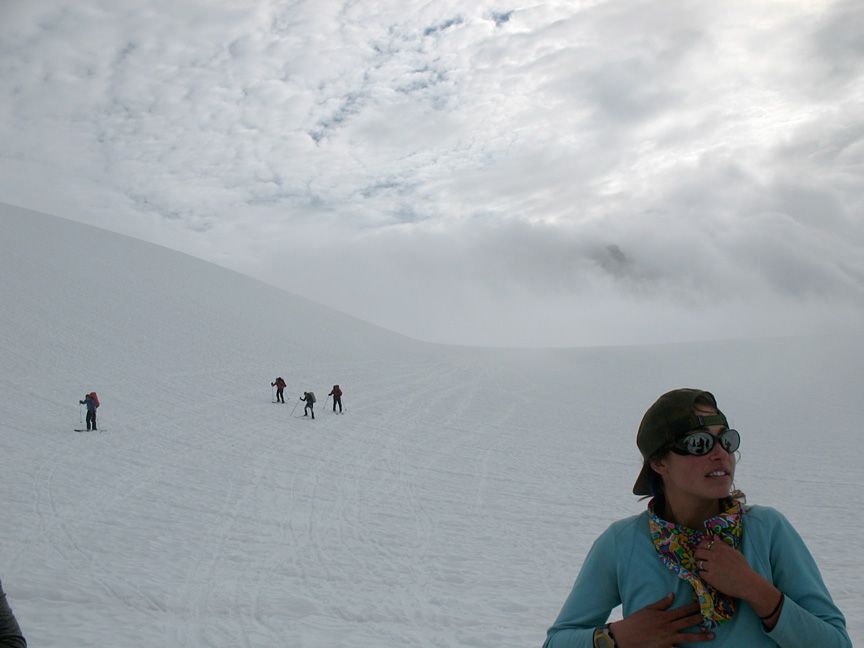
|
|
|
Skipjack Joe
Elite Nomad
     
Posts: 8088
Registered: 7-12-2004
Location: Bahia Asuncion
Member Is Offline
|
|
Moody landscape -
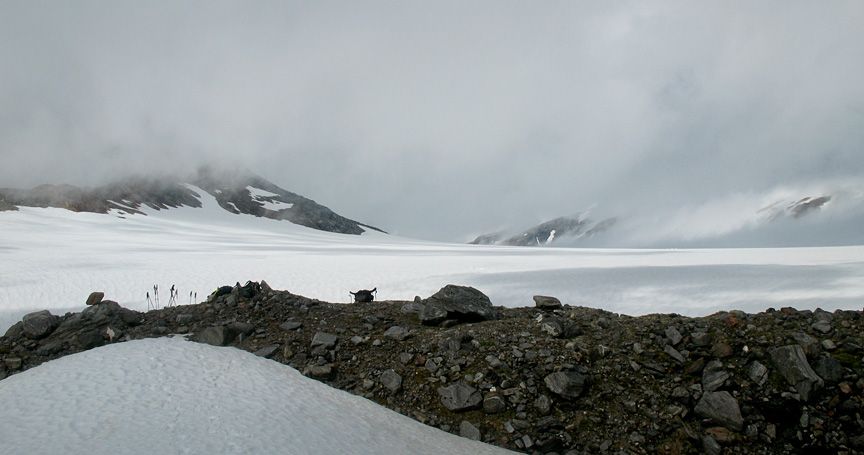
|
|
|
Skipjack Joe
Elite Nomad
     
Posts: 8088
Registered: 7-12-2004
Location: Bahia Asuncion
Member Is Offline
|
|
Rope Team. Everyone is tied to each other as they approach an area with crevasses.

|
|
|
Skipjack Joe
Elite Nomad
     
Posts: 8088
Registered: 7-12-2004
Location: Bahia Asuncion
Member Is Offline
|
|
Taking a break without removing your skis.
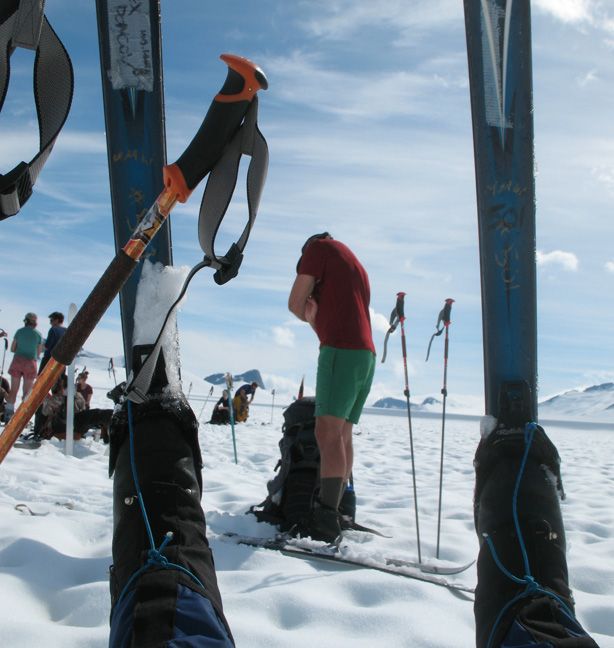
|
|
|
Skipjack Joe
Elite Nomad
     
Posts: 8088
Registered: 7-12-2004
Location: Bahia Asuncion
Member Is Offline
|
|
Snow like white satin. A great day for shooting.
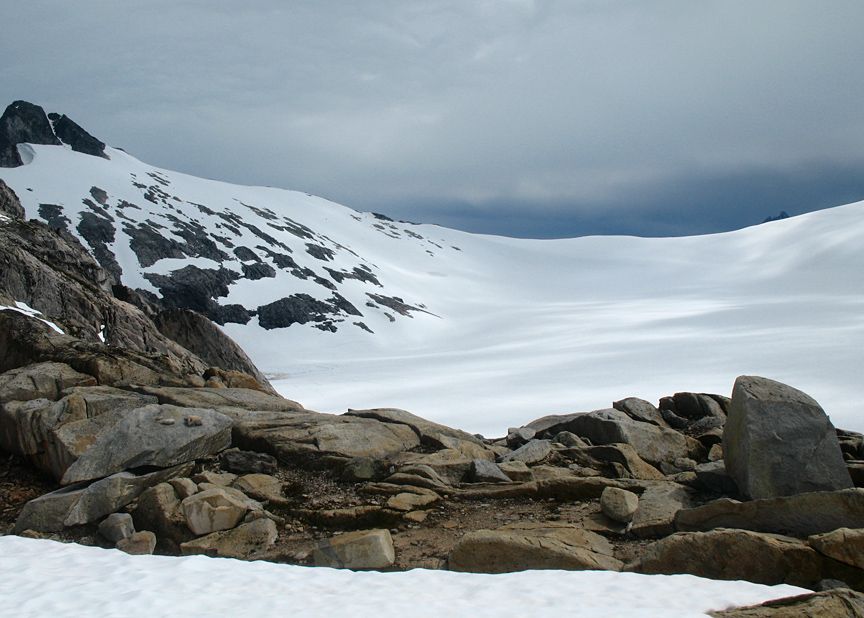
|
|
|
SFandH
Elite Nomad
     
Posts: 7431
Registered: 8-5-2011
Member Is Offline
|
|
Great adventure for your son and thanks for the photos. In your first post you mentioned the Gilkey Glacier, part of the Juneau icefield.
I found this info about the Juneau Icefield Research Program began in 1946 for those who are interested.
http://glacierchange.wordpress.com/2009/11/01/215/
also
http://www.crevassezone.org/
[Edited on 8-23-2013 by SFandH]
|
|
|
Skipjack Joe
Elite Nomad
     
Posts: 8088
Registered: 7-12-2004
Location: Bahia Asuncion
Member Is Offline
|
|
The Gilkey Glacier is so amazingly beautiful that I entertained the idea of going there from the Canadian side. Ferry across Lake Atlin and then hike
to the top. But Alex said the area is steep and heavily crevassed, requiring crampons and mountaineering gear. Not for a first timer. They slept on
the icefield without a tent so perhaps you could cut down on some of the gear. One JIRPer wrote that they slept to the sound of calving glaciers into
the terminus lake of the glacier. Must've been quite an experience.
|
|
|
Skipjack Joe
Elite Nomad
     
Posts: 8088
Registered: 7-12-2004
Location: Bahia Asuncion
Member Is Offline
|
|
| Quote: | Originally posted by DianaT
WOW --- fantastic adventure and really great photos! They are all wonderful. I don't really have a favorite, except that view from the outhouses
really shows the vastness and beauty of the area --- it really grabbed me. But then again, so did all of the photos.
Will Alex want to go back?
Thank you very much for sharing these and it would be interesting to hear about what he learned in addition to how to survive on ice!
|
Diana,
He said it was a life changing experience. He's been in a funk ever since he came back. It's like readjusting after coming back from the moon. They
all became very close up there and breaking the ties wasn't easy.
He'd like to go back in 2 years but I'm not sure about it. He could only come back as a staff member and there are only 6 per class. He's not an
authority on glaciology and many are.
They had lectures every day up there from scientists from all over the world. They would fly in these people for a few days with the helicopter that
brought supplies (and my letters) to the cabins. I don't think these people were paid for it. There is a great draw to this area in the summer.
Most come for the sense of peace and belonging that they rarely find elsewhere. It's hard for me to describe although I sense it from the images. Even
the JIRPers try to convey their emotions and can't seem to get it.
As far as Alex goes - I can tell from the subjects and choices he made in his images that he's developed a side of his relationship to nature that
wasn't there before. He's seeing better and more fully. The adrenalin aspect of being outdoors is perhaps taking a smaller aspect now.
|
|
|
CortezBlue
Super Nomad
   
Posts: 2213
Registered: 11-14-2006
Location: Fenix/San Phelipe
Member Is Offline
|
|
The photos weren't shot from an Iphone that is for sure.
It is difficult to shoot in bright snow and bright clouds and still get great detail in the darker areas.
I am assuming they were shot with a camera that supports spot metering.
Good Stuff
|
|
|
Skipjack Joe
Elite Nomad
     
Posts: 8088
Registered: 7-12-2004
Location: Bahia Asuncion
Member Is Offline
|
|
The images were shot with a canon a630 point and click camera. As you say the snow pictures were all underexposed. It's taking some photoshop work to
get the details out of the rocks. Many of the images were taken on overcast days and those are being left as they are to preserve natural conditions.
In the first image on the Gilkey Glacier Alex was a black blob. I spent more time on that one because the scene was worth it. But it's still a pretty
amateurish job at photoshop. I wasn't going to the trouble of doing layering to get better results.
We considered the iphone but there was no way to recharge it up there. The Canon took AA batteries.
[Edited on 8-23-2013 by Skipjack Joe]
|
|
|
wilderone
Ultra Nomad
    
Posts: 3894
Registered: 2-9-2004
Member Is Offline
|
|
What an absolutely marvelous experience. Thanks for sharing. (As for the "funk" after returning home, he can always go on backpack trips up to or
near glaciers - lotta glaciers in the USA).
|
|
|
Skipjack Joe
Elite Nomad
     
Posts: 8088
Registered: 7-12-2004
Location: Bahia Asuncion
Member Is Offline
|
|
Overlooking the Gilkey Glacier.

|
|
|
DianaT
Select Nomad
      
Posts: 10020
Registered: 12-17-2004
Member Is Offline
|
|
| Quote: | Originally posted by Skipjack Joe
Overlooking the Gilkey Glacier.
 |
A once in a life time experience that is beautifully documented by Alex and his point and shoot camera. I would say that Alex is really lucky, but
he earned the right to be there.
|
|
|
Skipjack Joe
Elite Nomad
     
Posts: 8088
Registered: 7-12-2004
Location: Bahia Asuncion
Member Is Offline
|
|
Mass Balance Pit
Every student had a project he was involved in. But in addition to that the central study was determining the change in the size of the glacier. This
was computed from the measurements of mass balance pits. These pits were typically dug to a depth of 12 meters and were dug at various specific spots
on the icefield. Typically this work involved a 5 mile ski trip, followed by 3 hours of digging and then another 5 miles back to the cabin. Alex loved
this work and volunteered to take another JIRPer's turn.
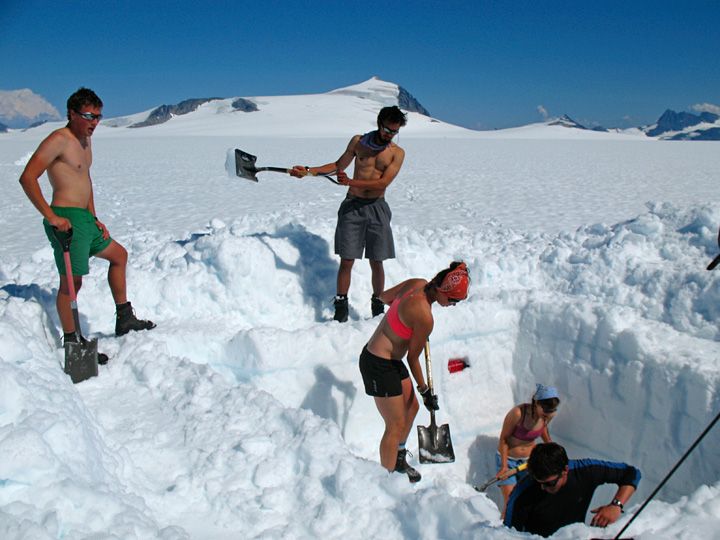
|
|
|
Skipjack Joe
Elite Nomad
     
Posts: 8088
Registered: 7-12-2004
Location: Bahia Asuncion
Member Is Offline
|
|
Core samples of the ice was taken each 10 cm from top to bottom. Each sample was weighed to determine the density of the ice. The holes you see behind
are the locations where these samples were taken. The pit went down to the top of last years ice.
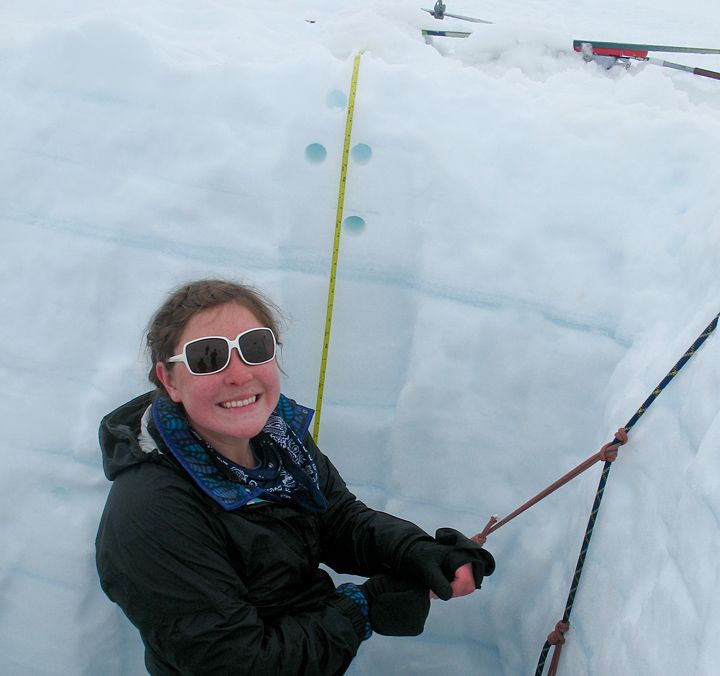
[Edited on 8-25-2013 by Skipjack Joe]
|
|
|
Skipjack Joe
Elite Nomad
     
Posts: 8088
Registered: 7-12-2004
Location: Bahia Asuncion
Member Is Offline
|
|
Here a core has been removed and is being passed below where it is extracted and weighed. Due to compaction the density will increase as you go deeper
until solid blue ice is formed.
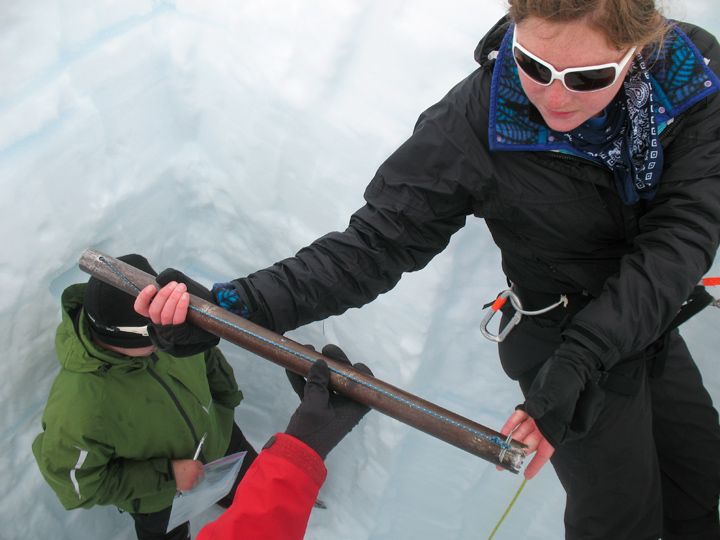
|
|
|
Skipjack Joe
Elite Nomad
     
Posts: 8088
Registered: 7-12-2004
Location: Bahia Asuncion
Member Is Offline
|
|
Dealing with blisters.
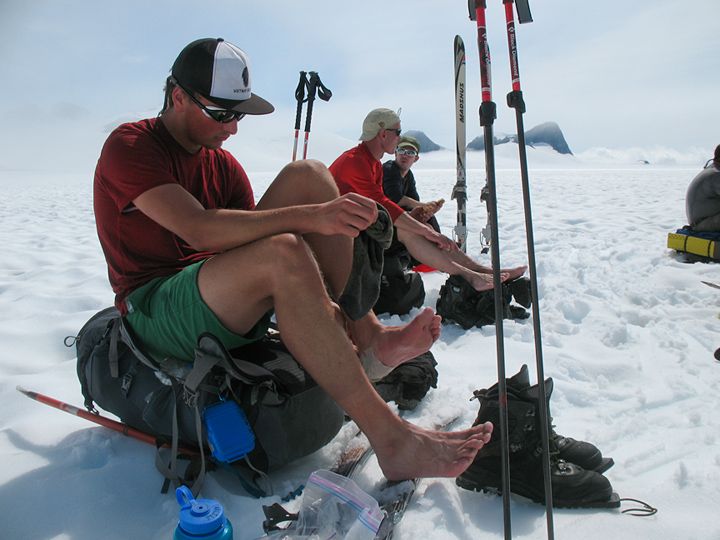
|
|
|
Skipjack Joe
Elite Nomad
     
Posts: 8088
Registered: 7-12-2004
Location: Bahia Asuncion
Member Is Offline
|
|
They call this a "whiteout". When the clouds come down on you on the icefield and you are on the ice, all landmarks are lost and there is a sense of
being lost. All students were required to have compasses and know how to use them for such conditions.
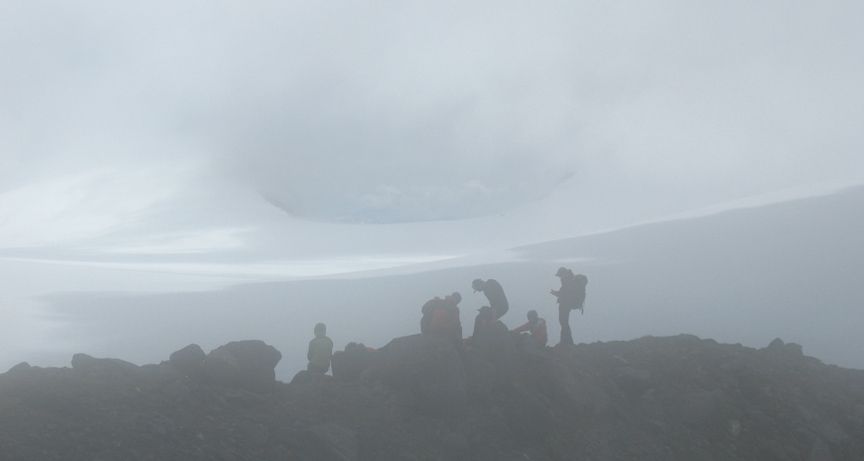
|
|
|
Skipjack Joe
Elite Nomad
     
Posts: 8088
Registered: 7-12-2004
Location: Bahia Asuncion
Member Is Offline
|
|
Storm moving in from the Pacific.
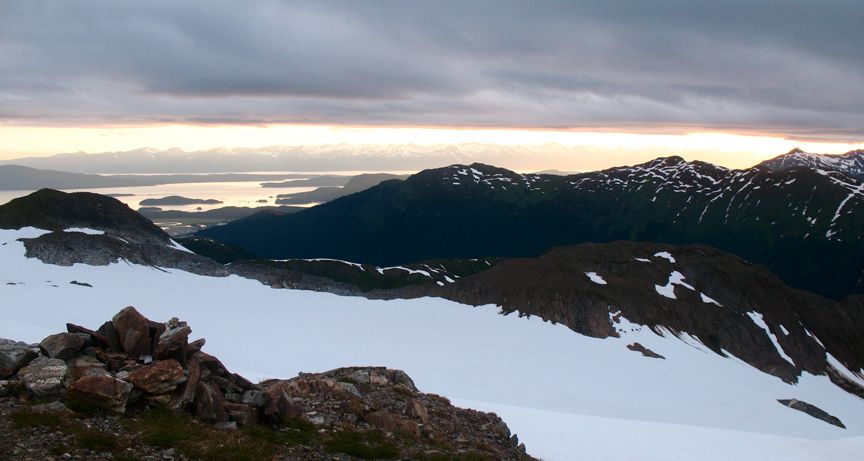
[Edited on 8-25-2013 by Skipjack Joe]
|
|
|
Skipjack Joe
Elite Nomad
     
Posts: 8088
Registered: 7-12-2004
Location: Bahia Asuncion
Member Is Offline
|
|
Coming out to see the last glimpse of daylight.
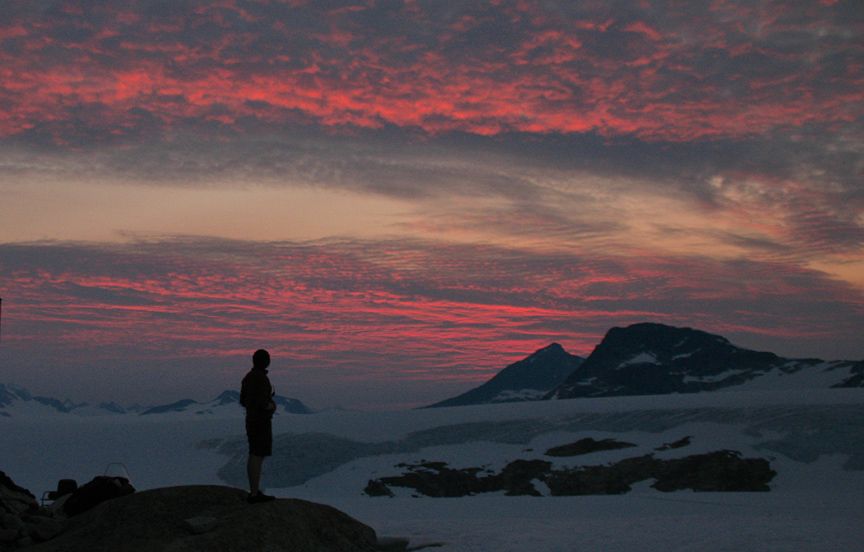
|
|
|
| Pages:
1
2
3
4
5 |

